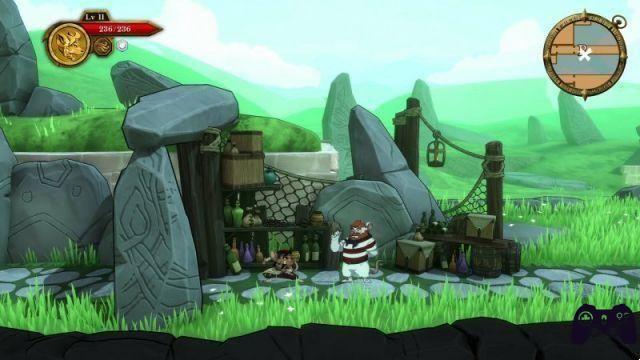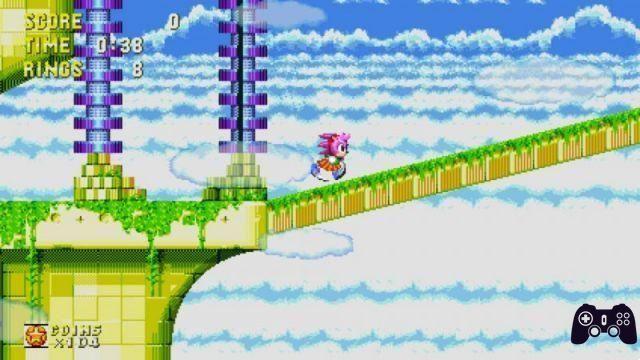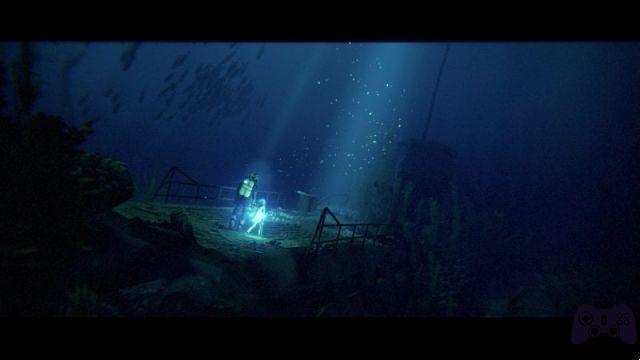In recent years the proliferation of the roguelike genre (or roguelite, for those who prefer the distinction) has been quite evident. Just searching the word "rogue" on Steam returns almost eight thousand results. Not all of them belong to the genre derived from the 1980 Epix title, but there is no doubt that there are many out there. Some would say there are too many, but let's ignore that. Procedurally generated maps, two distinct progressions (one in-game and one made up of permanent upgrades that span the entire game), often very advanced character customization, and a generally very high level of challenge (complete with death permanent) are some of the features that characterize what today has become a true fetish genre in the independent scene, which has truly reinterpreted it in every sense, almost to the point of paroxysm.
In the Rogue Spirit Review Let's try to understand how the equipment works. Children with sticks has tried to stand out from the tide, with a game released in early access about a year and a half ago and now gaining traction. version 1.0.
The premise of Rogue Spirit

In Rogue Spirit you assume the ethereal role of the ghost of Prince Midra, called upon to defeat the armies of chaos practically alone. In reality, as a spirit, he would be completely helpless if it weren't for the fact that he is able to possess the bodies from dead humans, acquiring their appearance and abilities. We are in feudal Japan, and to explain the situation we meet some monks from a remote monastery, who send him practically alone to face the enemy, giving him support made up of paid skills, paid pets and paid extra functions (this trend of the video game distributors to increase store prices even in the face of the possible end of the world that we will never understand). She can't die anyway, so they aren't really concerned about her health and still want to profit from her. At most, you'll need to start the race to explore the ten large levels, divided into five biomes, that make up the game world from the beginning.

Possessing enemy bodies is as easy as pressing a button. However, don't expect Messiah-style refinements, because here the bodies are just objects to be used in the fight and evaluated as such. By the way, a good part of the game time is spent looking at the values of the corpses to decide whether or not to change the body that is already in use. Considering that possessing enemies is also the main way to heal yourself, you will understand that it is a central system to the entire gaming experience, although in the later stages we tend to become more conservative, trying to preserve the best bodies as much as possible. possible. possible, as long as possible.
Combat system

Il combat system In itself it is really very simple and direct. The action is in real time and the characters are seen in third person. Each enemy has its own basic attack and a secondary attack. In total there are eighteen types of enemies to possess and use, ranging from sinewy beasts armed with claws to agile warriors equipped with bows or fans as sharp as razor blades. It must be said that the variety is not very high, a problem that is especially felt when reaching the last levels after very long gaming sessions. Even the combat system itself generates some fatigue over time. At first you pay little attention to it, because you are still in the phase where everything is very difficult to do, you die often and you approach enemies with some caution. However, when you begin to have some familiarity with the mechanics, have understood how the bodies work by heart and have acquired many fixed skills, you realize that despite the eighteen combat styles that can be used and despite the active transients and passive abilities that are collected from the shrines scattered around the maps, the techniques to use to advance are always more or less the same, also because the enemy's attack patterns become easily predictable (they are not very intelligent, let's be honest ).
That said, Rogue Spirit never gets too easy, although it is never really difficult, but the difficulty of the later stages is determined more by the damage done by the opponents with a single shot and by its quantity, than by the remodulation of its attack patterns. He game However, it never becomes unbearable, but rather a bit of repetitiveness appears. The five bosses break up the action a bit, enemies with unique attack patterns, stronger than normal opponents and whose bodies cannot be possessed (also because they are so big). Their greater resistance and the uniqueness of their movements make them especially interesting, because they require different approaches depending on the body you have. Without giving too many spoilers, we can say for example that facing the first boss with a strong but slow body requires developing good parrying skills, while facing him with a weaker but faster body allows you to go all out on dodges and quick attacks. Nothing revolutionary, conceptually, but at least it's something different.
The mechanics of stealth

Rogue Spirit also integrates a secret system very simple, which paradoxically makes crossing the levels faster. During the game you can summon Midra's ghostly form with the press of a button. The advantages of doing so are many, not only because he moves faster than human bodies, he can see hidden objects, and he can use a guidance ability that tells him the path to follow to reach the end of the level (complete with a directional line that appears in the game world), but also because it is less detectable and can show the vision cones of enemies. In this way it is not only possible to know when you are within their range, but also to act to position yourself behind them and launch often lethal attacks, quickly returning to the possessed body. The paradox, obviously, is that the collective imagination usually links the slower moments of the game with stealth mechanics, when on the other hand here the exact opposite occurs, a trend that is also favored by some fixed abilities that can be purchased in the game area. temple and which make Midra even less detectable and increases the damage of sneak attacks.
Without infamy and without praise

From the point of view technical and stylistic Rogue Spirit has no infamy or praise. The cartoon style is not bad, but it inevitably looks like you've already seen it. The 3D models are adequate, but have relatively weak characterization, with heavy references to some Japanese stereotypes and nothing more. The bosses do it a little better, but without too much imagination. They are basically represented as the opposite of their nature. For example, Famine, the first boss, is depicted as a fat and voracious woman. In general there is nothing really negligible, with maps that, despite the random generation, offer a really pleasant look, but there is also nothing that stands out due to the author's particular choices.
Let's say that this is the philosophy that underlies the entire project, with great care to never exceed the limits it has imposed. In the end it is impossible to say that it was not a success, but the feeling is always that something notable is missing due to excess of control, the experience being solid, but at the same time destined to be quickly stored in memory once it is finished. . .
Conclusions
Tested version PC con Windows V1.0 digital delivery Steam, epic games store Price 19,99 € Holygamerz.com 7.5 Readers (2) 7.8 your voteIt's hard not to recommend Rogue Spirit because it gets the job done and if you're intrigued by the genre, you definitely won't mind playing it. At the same time, however, it's as if throughout the game it never lets itself go, failing to create memorable moments to focus everything on its roguelike nature. It entertains, it does some good things, but it never exalts, also a victim of a certain underlying repetitiveness of its fundamental dynamic. In short, it is a good title, it surely knows how to be appreciated, but it always stays within its limits.
PRO
- The mechanics of possession of bodies.
- Well managed progression
AGAINST
- Everything works well, but there's nothing that really stands out.
- In the long run a bit of repetitiveness appears.






